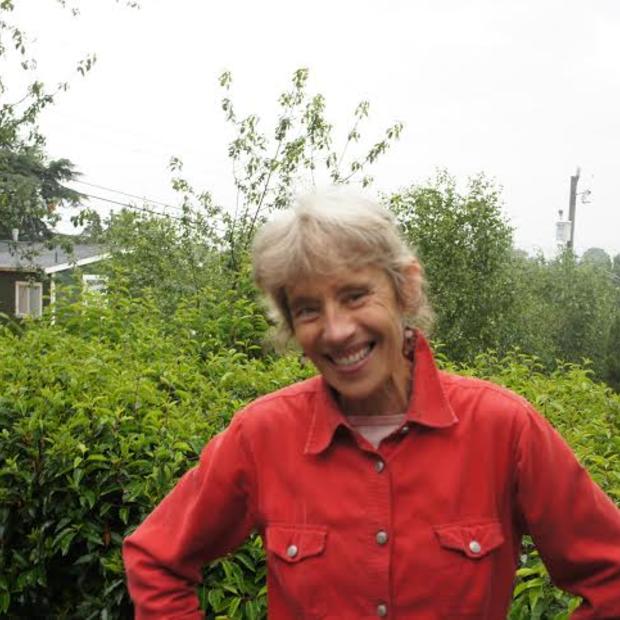Oysters on the half-shell: What’s a summer without them? For thousands of years oysters were considered inexhaustible in the Pacific Northwest. But loss of habitat, excessive harvests, and most recently ocean waters saturated with greenhouse gases are undermining stocks. Can these rich succulent marine creatures be reestablished in community shellfish farms?
Click here to listen to the audio version of this story.
Summer time. Low tide. Add the chance to harvest oysters on a cool clean beach and you know you’re in a special part of the world. “These are monsters. Compared to last time these are twice as big!” Volunteers sort oysters for 50 families at a community shellfish farm at Port Madison Bay on Bainbridge Island.
Josh Bouma pulls grow bags from ground lines and hauls them to a plastic mat. Bouma works with the Puget Sound Restoration Fund, a non-profit dedicated to re-establishing oyster populations in Puget Sound and the Salish Sea. “These are Port Madison petities. It’s a Pacific oyster which is non-native, but it’s the most commonly cultured oyster in Puget Sound.” Once thought inexhaustible in this fertile part of the world, oysters have succumbed to habitat loss, over-harvest, pollution, and most recently ocean waters so corroded by greenhouse gases that the shells of baby oysters can’t form.
Private tidelands that can nourish oysters are a critical piece of the reestablishment puzzle says Betsy Peabody, executive director of the Puget Sound Restoration Fund. Some 75 percent of all state tidelands are privately owned. All that’s required is convincing owners to allow small shellfish farms on their property. “And the community shellfish farm projects are about providing incentives for clean water and giving people a taste of this place; growing it an area where the water is clean and giving them an incentive to clean up the water elsewhere around the island so they can also have access to these resources," Peabody says. The fund is growing native and non-native oyster populations in 19 intertidal estuaries from Central Puget Sound north to Canada and south to Olympia.
On a wet rainy day, volunteer Bill Cleveland says he feels like he’s sharing the oyster environment. Cleveland’s wife gave him a share in the community shellfish farm as a birthday gift. The obvious benefit, he says, is a wonderful meal or two. “But the other is learning so much about the relationship of these incredible creatures to the viability of the ocean, of the aquaculture.” Cleveland grew up in what was once an epicenter of oyster culture, Chesapeake Bay on the East Coast. “So when this opportunity arose it was like a reprise and to be a part of something that is both, you know, here we are we’re consuming, but we’re also conserving, which is really a treat and a privilege," he says.
Shellfish throughout the world play a pivotal role in maintaining the health of estuaries because they’re filter feeders. In nutrient rich Puget Sound they filter out excess plankton blooms. Again Betsy Peabody: “They’ve evolved on every shoreline throughout the world so they’ve been around for 650 million years all right, doing good services during that time.”
But evolving the next generation of oysters is fraught with challenge. Many shellfish growers depend on seed from hatcheries. And seed, oyster larvae, is being impacted by ocean waters saturated with greenhouse gases. Since 2005 wild oysters on the coasts of Oregon and Washington have been dying in their larval stages.
Taylor’s Shellfish Hatchery in Quilcene supplies seed for the community shellfish farm but relies on expensive equipment to monitor seawater chemistry. If north winds stir up deep corrosive water, the larvae don’t stand a chance. “What NOAA scientists are telling us is this water that’s upwelling on the coast is fifty years old,” says Bill Dewey, Taylor’s communications director. “So even if we change our carbon emissions policies today and stop the insult, the conditions are going to get worse for the next 50 years before they start to get better.” There’s no choice, he says, but to figure out how to monitor seawater chemistry and adapt.
Peabody with the Puget Sound Restoration Fund says we need to understand where ocean influences are greater and where land based nutrient inputs are greater — failed septic tanks, leaking fuel oil from boats, or fecal matter that can close shellfish beds. There are geographic differences and seasonal differences from year to year. ”If we can’t eat from this place, then that starts to raise all sorts of alarms in terms of how we live sustainably here in this region.” Collectively, says Peabody, we need to reduce both our carbon and our human footprint in the place called Puget Sound.
Green Acre Radio is brought to you with support from the Human Links Foundation. Engineering by CJ Lazenby.



